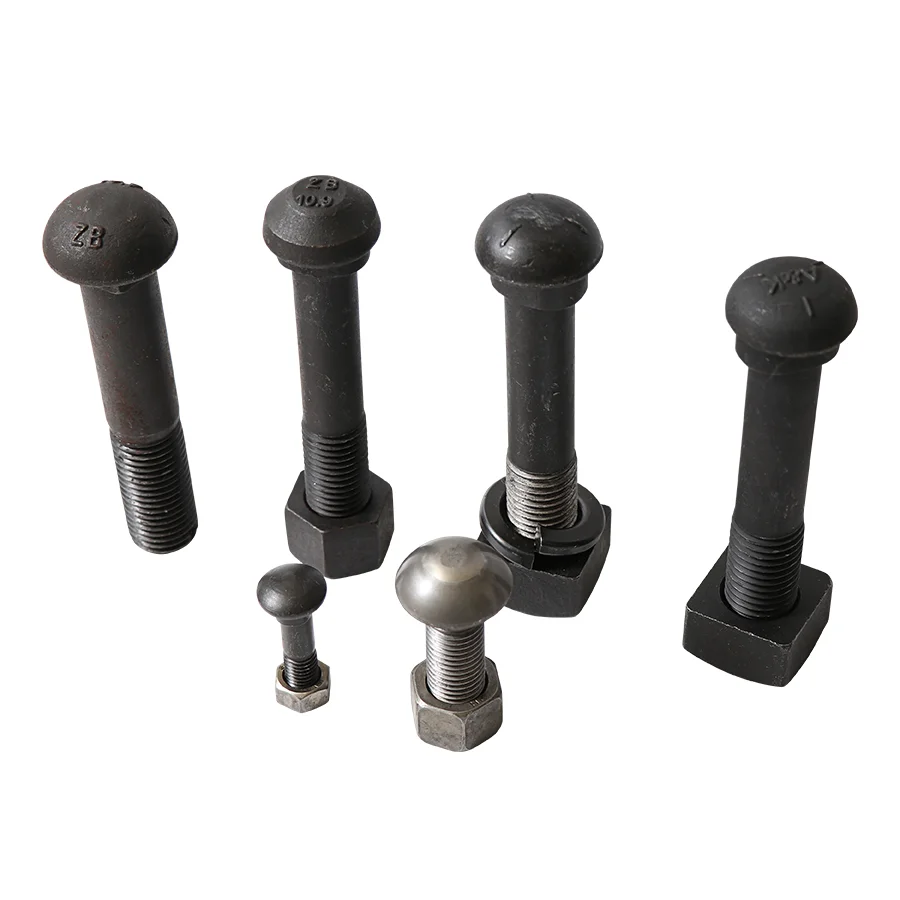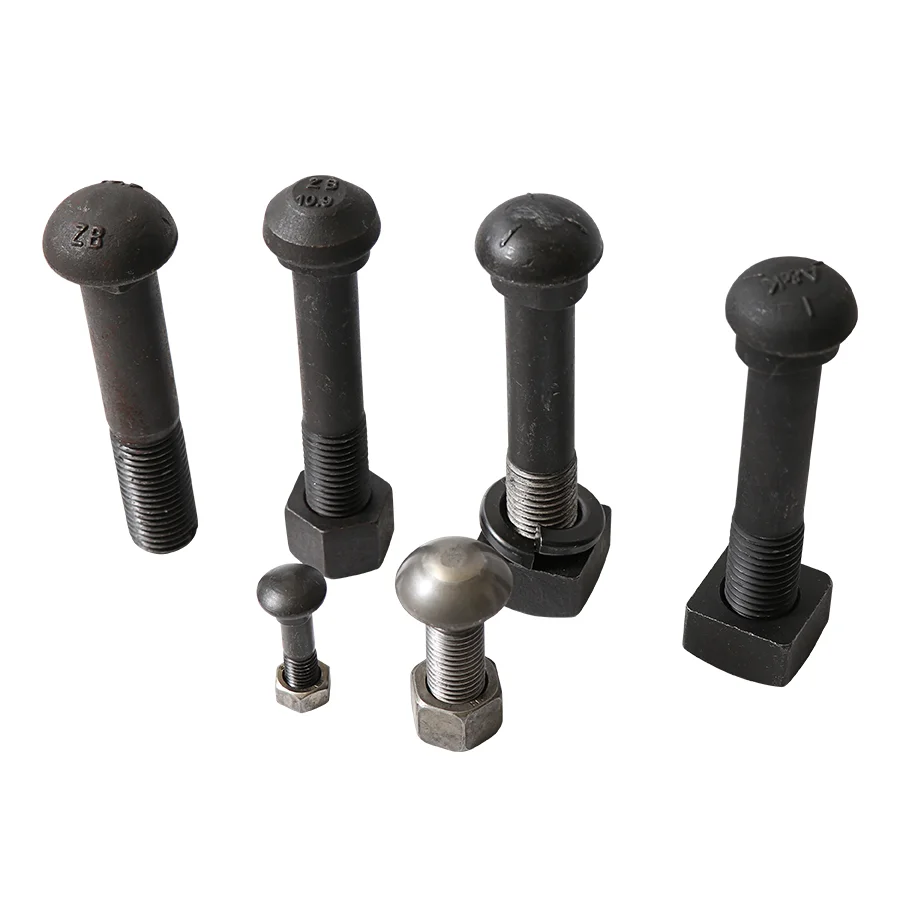In the railway industry, track fastening systems play a crucial role in ensuring stability, safety, and long service life. Among the most essential components in these systems is the Fish Bolt, also known as a fishtail bolt or rail bolt. This specialized fastening device is widely used in railway track joints, providing secure connections between rails and maintaining the overall integrity of the track structure.

With increasing demands for durability and safety in railway infrastructure, corrosion-resistant fish bolts have become the preferred choice for long-term track performance.
What Is a Fish Bolt
A fish bolt is a type of railway fastener specifically designed for use in the splint connection of track joints. Unlike common hexagonal bolts, a fish bolt has a distinctive structure:
A half-round head at the root of the bolt.
Two protruding pieces inside the round head, which improve grip and fastening strength.
The unique design allows fish bolts to tightly secure the fishplates (also called splice bars) that connect two adjacent rails. This fastening method ensures that the track remains stable under the heavy loads and vibrations caused by passing trains.
Applications of Fish Bolts in Railway Systems
Fish bolts are essential in railway track laying and maintenance, particularly in industries such as:
Metallurgy plants – where heavy-duty rail systems are used for material transport.
Coking and steel industries – where tracks face extreme operating conditions.
Urban rail and heavy-haul transport systems – requiring reliable fastening to ensure safety and smooth operation.
By fastening rails at their joints, fish bolts minimize displacement, maintain alignment, and extend the lifespan of track systems.
Types of Fish Bolts
Fish bolts are mainly categorized based on the material used in their production:
1. Pusong Fish Bolts
Typically made of Q235 steel.
Suitable for standard railway applications.
Provide sufficient strength for moderate rail systems.
2. High-Strength Fish Bolts
Manufactured from advanced alloy steels such as:
45# steel
20 manganese titanium boron steel
35CrMoA
40 boron steel
These materials offer superior mechanical strength, toughness, and resistance to fatigue, making them suitable for heavy-load railway lines and harsh environments.
Why Choose Corrosion-Resistant Fish Bolts
Corrosion is one of the most significant threats to railway fasteners. Exposure to moisture, chemicals, and varying weather conditions can weaken standard bolts, leading to reduced fastening capacity and potential safety hazards.
Corrosion-resistant fish bolts are designed to overcome these challenges by:
-
Extending service life – Reduced need for frequent replacements lowers maintenance costs.
-
Ensuring safety – Strong resistance to rust ensures bolts maintain their structural integrity under heavy loads.
-
Supporting sustainability – Durable bolts minimize material waste and improve resource efficiency.
-
Enhancing performance – Consistent fastening power prevents track loosening and misalignment.
These qualities make corrosion-resistant fish bolts ideal for long-term railway applications, especially in regions with high humidity, coastal areas, or environments exposed to industrial pollutants.
Manufacturing Standards and Quality Control
High-quality fish bolts are manufactured under strict standards to ensure safety and reliability. Key quality features include:
ISO and GB compliance for international railway fastening standards.
Precision forging and machining to achieve accurate dimensions.
Heat treatment processes to enhance strength and toughness.
Surface treatments such as galvanization, hot-dip zinc coating, or black oxide coating for corrosion resistance.
These processes ensure that each fish bolt meets the rigorous demands of railway applications.
Installation and Maintenance of Fish Bolts
Installation
Fish bolts are used together with fishplates (rail joint bars).
The bolt passes through aligned holes in the fishplate and rail web.
Nuts and washers are tightened to secure the joint.
Maintenance
Regular inspection is required to check for loosening, wear, or corrosion.
Bolts should be re-torqued periodically to maintain tight fastening.
Corroded or worn-out bolts should be replaced immediately to ensure safety.
Advantages of Using Fish Bolts
-
High fastening strength – Ensures rails remain tightly connected.
-
Versatility – Suitable for various rail sizes and applications.
-
Durability – Especially when manufactured with high-strength and corrosion-resistant materials.
-
Ease of replacement – Simple installation and removal during maintenance operations.
-
Cost-effectiveness – Long lifespan reduces overall maintenance expenses.
Conclusion
The fish bolt is an indispensable component in modern railway fastening systems, ensuring secure rail connections and long-term track durability. With advancements in materials and corrosion-resistant technologies, today’s fish bolts offer unmatched performance in demanding environments.
Whether used in heavy-duty steel plants, coking facilities, or high-speed railway lines, fish bolts continue to play a critical role in maintaining railway safety and efficiency. For projects seeking reliable and long-lasting fastening solutions, corrosion-resistant fish bolts are the ideal choice.
